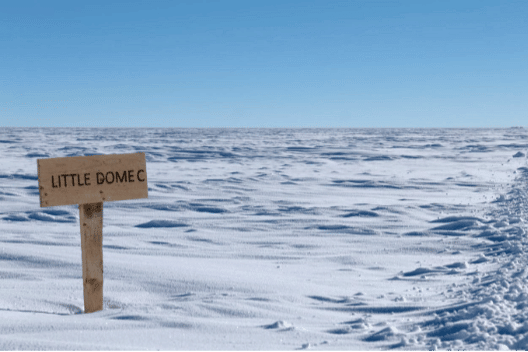Climate forcing and the carbon cycle
The study of changes in the greenhouse effect and mechanisms regulating the carbon cycleat all timescales, is one of the central themes of the Climate team. We study solar and volcanic climate forcing over the last millennium based on records of the concentration of 10Be in carrots from Antarctic ice. Our reconstructions of these forcings have contributed to the comparison of climate models (CMIP6 and PMIP4) from the latest IPCC. To complement and better understand the information provided by 10Be, we have developed a measurement of the 36Cl in polar iceanother climate indicator. Their isotopic ratio is also an important dating tool for ice cores. These approaches are being developed as part of several international projects (H2020 Beyond EPICA-Oldest Ice project, 2019-2026, ANR ToBE 2023-2027, both led at CEREGE by Mélanie Baroni). Another aspect of this work is based on the measurement of the 14C at annual resolution in subfossil woods covering the last deglaciation (ANR MARCARA2021-2025, continuation of the ANR CARBOTRYDH project, led by Edouard Bard). Our records from wood from the French Alps are being compared with similar results from the southern hemisphere (New Zealand and Tasmania) and with cosmonucleide records from polar ice, as well as with 14C measurements in planktonic foraminifera to assess air-sea exchanges of CO2. Taken together, these data will help to improve the calibration of the 14C radiochronometeressential for tracing and quantifying processes in the carbon cycle.
L'evolution of carbonate biogenic production has been shown to control the inorganic part of the oceanic carbon cycle over geological time, and its study is one of the team's strengths. Recently, the ANR MioCarb (2020-2024), supported by Baptiste Suchéras-Marxfocuses on the study of this production during the late Miocene and early Pliocene. L'study of the carbonate system in the carbon cycle has also just been strengthened by the recruitment ofOlivier Sulpis (CR CNRS; 2022).
Tom Chalk (CR CNRS; 2023), winner of a funding ERC-StG ForCry in 2022, will contribute to the analytical development of this theme with theanalysis of stable boron isotopes. The application of this cutting-edge method makes it possible to reconstruct the pH and the evolution of atmospheric CO2 during the NeogeneThe aim is to reconstruct the evolution of the carbon cycle over geological time.
Finally, the ANR-PRCI ORACLEfunded in 2022 and supported by Yannick Garcinfocuses on the study of soil carbon. ORACLE proposes to reconstruct theHolocene history of peat in the Congo with the aim of gaining a better understanding of the tropical carbon cycle and hydroclimatic dynamics in this part of the world.

Projects
- 2024-2029 : ERC Deep-C, Deep-sea carbonates under pressure: mechanisms of dissolution and climate feedbacks.
2022-2027 : ERC ForCry, Exploring the changing structure of the oceanic carbonate system and the natural history of atmospheric CO2 using geochemical proxies.
- 2022-2025: ANR MARCARA: MArine radioCArbon Reservoir Age variability and its implications in paleoceanography, paleoclimatology and geochronology
- 2020-2027: ANR H2020, Toward Beyond-EPICA (ToBE)
- 2020-2024: ANR MioCarb, The Mio-Pliocene transition: setting up the modern carbon cycle
- 2020-2024: ANR-PRCI ORACLE, Hydroclimatic dynamics and carbon cycle in the central Congo basin during the Holocene
- 2019-2026: H2020 : Beyond-EPICA - Oldest Ice (BE-OIC)

